How can you achieve a ‘zero waste’ commercial kitchen? What steps are food & beverage business owners, management and chefs taking to reduce, recycle and eliminate food waste in their restaurants? You may be closer to zero waste than you think...
We’ve compiled some food waste management techniques and initiatives that restaurants and businesses around the world are employing in their mission to reaching a ‘zero food waste’ commercial kitchen. Here are six ways to take food waste off your restaurant menu:
Breaking Restaurant Food Waste Down

An analysis of U.S. Food Waste in restaurants* found that 93.7% of restaurant food waste was disposed of and sent to landfill, 4.2% of unusable food was recycled and only 2% of food was donated.
So, how do we tackle food waste in commercial kitchens?
1. Tackle Food Waste at the Supplier Level
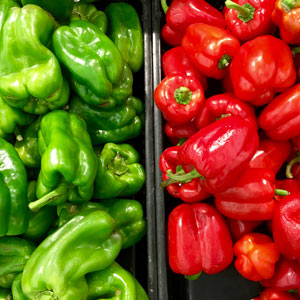
On the journey from farm to fork, food loss can occur throughout the supply chain at the processing, distribution and even storage stages.
One stage that significantly impacts food waste is culling – discarding products based on quality or appearance. Food often has to meet strict criteria including size, color, weight and blemish levels. A citrus and stone fruit producer reported that, despite being perfectly edible, up to 50 per cent of produce is often discarded simply because it doesn’t meet the appearance criteria.**
One way commercial kitchens can reduce supplier-level food losses is to buy ugly produce. Grocery store Hy-Vee partnered with the Robinson Fresh produce company to sell misfit produce that would otherwise be discarded due to not fitting typical cosmetic standards. Find out which suppliers sell ugly produce to cut down on costs and food waste!
2. Repurpose Roots, Rinds and the Rest
Chefs are re-purposing meat and getting creative with roots and rinds to stem organic waste.***
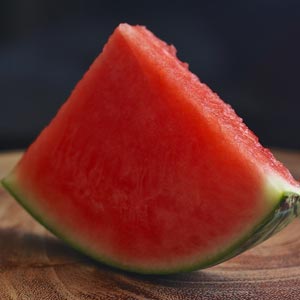
Try these ideas for repurposing leftover food next time you’re in the restaurant kitchen:
- Slow roast the woodier ends of asparagus for purées and bisques
- Dice and pickle watermelon rind in champagne vinegar, sugar, water and a pinch of salt for 2-3 days. Then mix it into a salad with mint leaves, feta cheese and balsamic vinegar for a refreshing salad.
- Grind leftover cuts of prosciutto di parma to create prosciutto powder. This can be used to season savoury dishes or to rim cocktail glasses for a luxury touch.
- Save cooked meats such as bacon or turkey to be used the next day as a cold sandwich fillings or salad toppings.
- Limit Storage Capacity
- Standarization
3. Compost Compote
You may be surprised to learn that the following items commonly found in your restaurant can actually be composted together****:
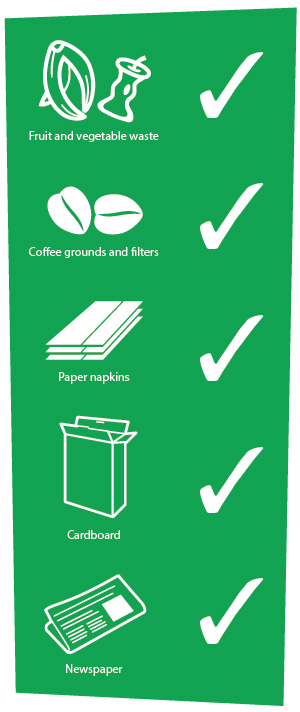
Why should we compost?
Composting organic waste diverts a large percentage of restaurant waste away from your trash cans. In turn, this will reduce the frequency of hauler collections and can help create business savings.
The biggest environmental benefit of compost is that it removes the need for synthetic chemical fertilizers and reduces the presence of these chemicals in our crops, streams and rivers.
How does composting work?
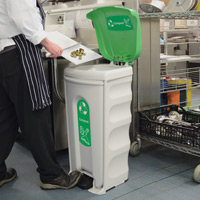
Successful composting relies on an equal mix of nitrogen-rich materials such as vegetable scraps and coffee grounds and carbon-rich materials including newspaper and un-dyed paper. Composting organic waste is a simple and realistic ‘zero waste’ solution for restaurants.
Collect your organic waste, coffee grounds, filters and paper napkins to be composted in a specially designed commercial organic waste container such as the Nexus® Shuttle.
Where do we compost?
You can set up a composter on site or speak to your existing waste hauler to find out about their food/organic waste collection services.
Many haulers will collect your organic waste for anaerobic digestion which will convert food waste into renewable energy or compost to help sustain our nation.
4. Source Food Locally
Did you know that up to 90 per cent of Americans could be fed entirely by local agriculture*****? So, is it not time we supported our local farmers by sourcing food locally?

Buying local also means getting fresher food from a source you both know and trust. Food from local sources will also not have to be chemically engineered to withstand long transportation. It will also have less chance of being spoiled or damaged during transit thanks to the reduced distance.
Sourcing produce from local farmers allows you to buy seasonal foods. Update your menu seasonally to serve the freshest crops and reduce the amount of food that goes to waste due to spoilage. Sourcing seasonally will benefit your business both economically and environmentally.
5. Fresh New Software

There’s a whole host of options out there when it comes to choosing restaurant management software. Restaurant inventory software offers innovative features which can help reduce food waste including inventory tracking, usage and loss statements and recipe costing.
If you already have restaurant management software in place, why not kick it up a notch?
The innovative app Food Cowboy helps you easily donate leftover food to local charities. Simply log on to the app and state what you have to donate and where it is located. Food Cowboy will then contact local charities to help you transfer your leftover food to a nearby charity for use.
6. Go Lean
Going lean doesn’t have to just refer to your food. You can also slim down your restaurant to help reduce food waste:
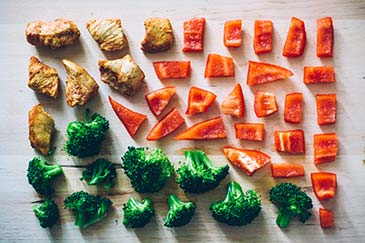
Removing walk-in refrigerators or reducing the size of food storage areas will reinforce precise ordering practices and help combat food waste.
Use a standardized system to cover, label and date stock. Having standard practices in place will support your First In First Out stock rotation to help reduce spoilage.
Sources:
*https://furtherwithfood.org/wp-content/uploads/2016/12/FWRA-Food-Waste-Survey-2016-Report_Final.pdf
**https://www.nrdc.org/sites/default/files/wasted-food-IP.pdf
***https://www.foodnewsfeed.com/fsr/sustainability/how-restaurants-can-fix-food-waste-good
****https://www.webstaurantstore.com/article/60/restaurant-composting.html
*****http://www.ucmerced.edu/news/2015/most-americans-could-eat-locally-research-shows




